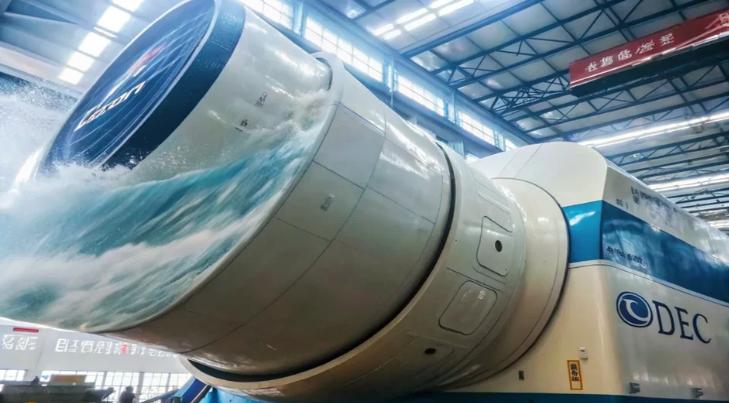China unveils world's most powerful 17 MW typhoon-resistant floating wind turbine

China has officially unveiled the world's most powerful floating wind turbine, boasting an impressive 17-megawatt capacity. This single turbine is capable of generating enough electricity to power approximately 40,000 homes annually. A key feature of this new installation is its ability to operate effectively in open seas, even amidst severe storms, high waves, and typhoons. The turbine is slated for real-world testing off the coast of Guangdong Province in the near future.
The sheer scale of the turbine is remarkable: it stands at a height of 152 meters, with a rotor diameter spanning 262 meters. To put this into perspective, its rotor diameter is longer than two airliners placed end-to-end. The area swept by its rotating blades approaches 53,000 square meters. Over a year, this colossal structure is projected to generate 68 million kilowatt-hours of electricity, all while producing zero emissions and minimal noise. Significantly, all components, from the rotor to the transformer, including a unique large-scale main bearing, are entirely domestically manufactured in China.

At the core of the turbine's design is a gearless direct-drive permanent magnet generator. This system features fewer moving parts, which inherently reduces wear and tear and lowers maintenance requirements. The turbine's heart houses a high-density rare-earth magnet generator, cooled by a closed-loop system. This advanced cooling mechanism ensures power stability even during sudden load fluctuations.
The platform supporting the turbine utilizes a semi-submersible design, partially submerged underwater and balanced by a sophisticated ballast system. Its position is meticulously controlled using GPS, gyroscopes, and digital sensors. Active pumps redistribute water within the pontoons to maintain equilibrium, ensuring the installation remains stable even during significant pitching. This stability is particularly crucial for deep-water regions (where depths can exceed 70-80 meters), where traditional fixed foundations are impractical. The turbine is securely anchored to the seabed by three robust chain anchors, with their tension adjusted dynamically based on prevailing weather conditions.
Furthermore, the generator is equipped with an intelligent monitoring system that continuously tracks external environmental conditions such as wind, waves, and pressure, alongside internal metrics like winding temperature, vibrations, and blade stress. This system incorporates fiber optic sensors embedded within the blades to detect even the slightest deformations in real time, aiding in the prevention of potential failures. A proprietary digital control database, integrated with machine learning algorithms, provides predictive diagnostics: the system forecasts potential malfunctions in advance and optimizes operational performance. With this level of automation, the turbine's efficiency consistently remains above 99%, signifying its nearly continuous operation even in challenging weather conditions.
The development of this advanced complex was made possible through the implementation of a new virtual simulation system. The combination of domestically produced components, advanced digital automation, and adaptation to deep-water environments positions China as a serious contender for global leadership in offshore wind power.
ORIENT




